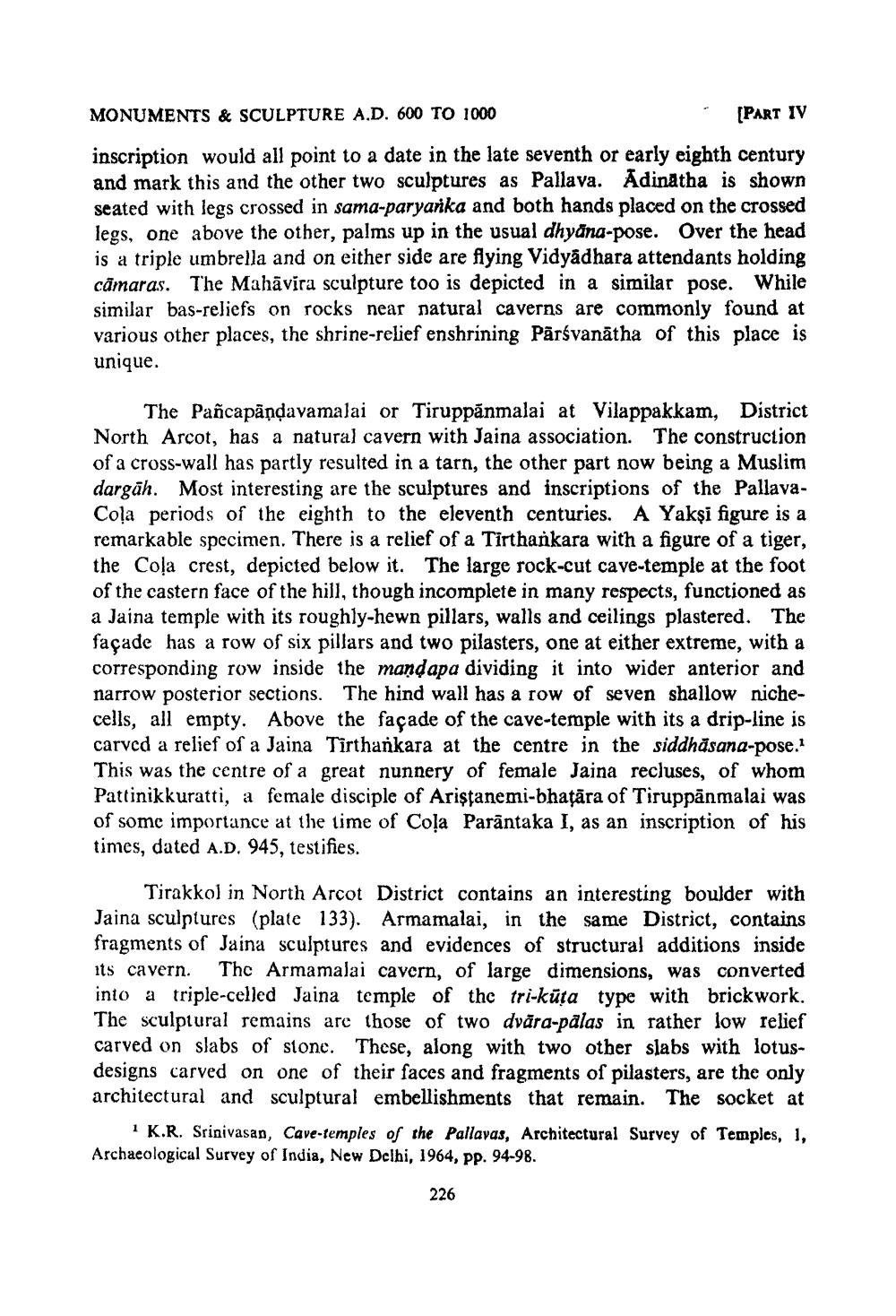________________
MONUMENTS & SCULPTURE A.D. 600 TO 1000
(PART IV
inscription would all point to a date in the late seventh or early eighth century and mark this and the other two sculptures as Pallava. Adinatha is shown seated with legs crossed in sama-paryanka and both hands placed on the crossed legs, one above the other, palms up in the usual dhyana-pose. Over the head is a triple umbrella and on either side are flying Vidyadhara attendants holding câmaras. The Mahāvira sculpture too is depicted in a similar pose. While similar bas-reliefs on rocks near natural caverns are commonly found at various other places, the shrine-relief enshrining Pārsvanātha of this place is unique.
The Pañcapāndavamalai or Tiruppănmalai at Vilappakkam, District North Arcot, has a natural cavern with Jaina association. The construction of a cross-wall has partly resulted in a tarn, the other part now being a Muslim dargāh. Most interesting are the sculptures and inscriptions of the PallavaCola periods of the eighth to the eleventh centuries. A Yakşi figure is a remarkable specimen. There is a relief of a Tirthankara with a figure of a tiger, the Cola crest, depicted below it. The large rock-cut cave-temple at the foot of the castern face of the hill, though incomplete in many respects, functioned as a Jaina temple with its roughly-hewn pillars, walls and ceilings plastered. The façade has a row of six pillars and two pilasters, one at either extreme, with a corresponding row inside the mandapa dividing it into wider anterior and narrow posterior sections. The hind wall has a row of seven shallow nichecells, all empty. Above the facade of the cave-temple with its a drip-line is carved a relief of a Jaina Tirthankara at the centre in the siddhasana-pose. This was the centre of a great nunnery of female Jaina recluses, of whom Pattinikkuratti, a female disciple of Aristanemi-bhatāra of Tiruppanmalai was of some importance at the time of Cola Parântaka I, as an inscription of his times, dated A.D. 945, testifies.
Tirakkol in North Arcot District contains an interesting boulder with Jaina sculptures (plate 133). Armamalai, in the same District, contains fragments of Jaina sculptures and evidences of structural additions inside its cavern. Thc Armamalai cavern, of large dimensions, was converted into a triple-celled Jaina temple of the tri-kūta type with brickwork The sculptural remains are those of two dvāra-palas in rather low relief carved on slabs of stone. These, along with two other slabs with lotusdesigns carved on one of their faces and fragments of pilasters, are the only architectural and sculptural embellishments that remain. The socket at
1 K.R. Srinivasan, Cave-temples of the Pallavas, Architectural Survey of Temples, 1, Archaeological Survey of India, New Delhi, 1964, pp. 94-98.
226




